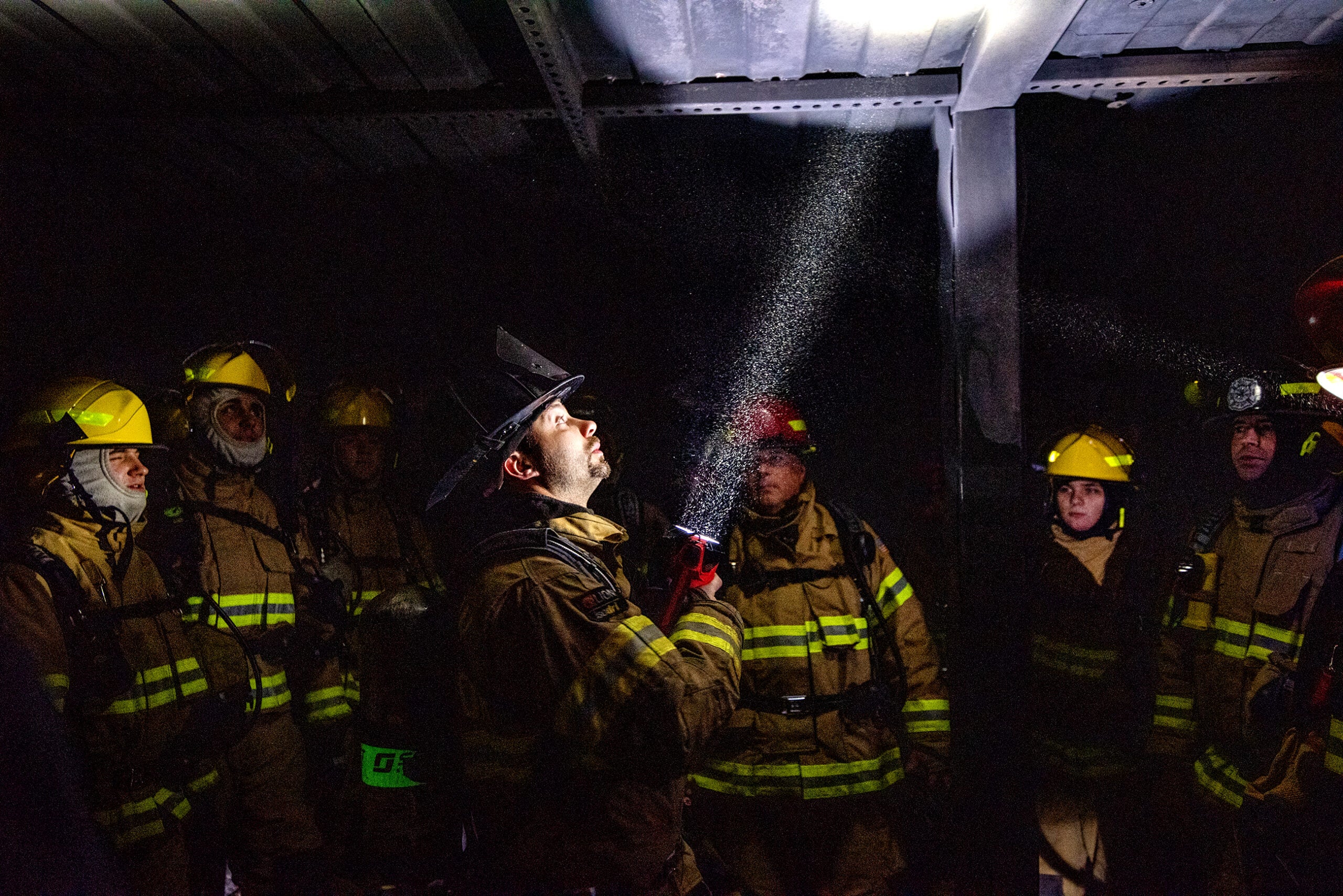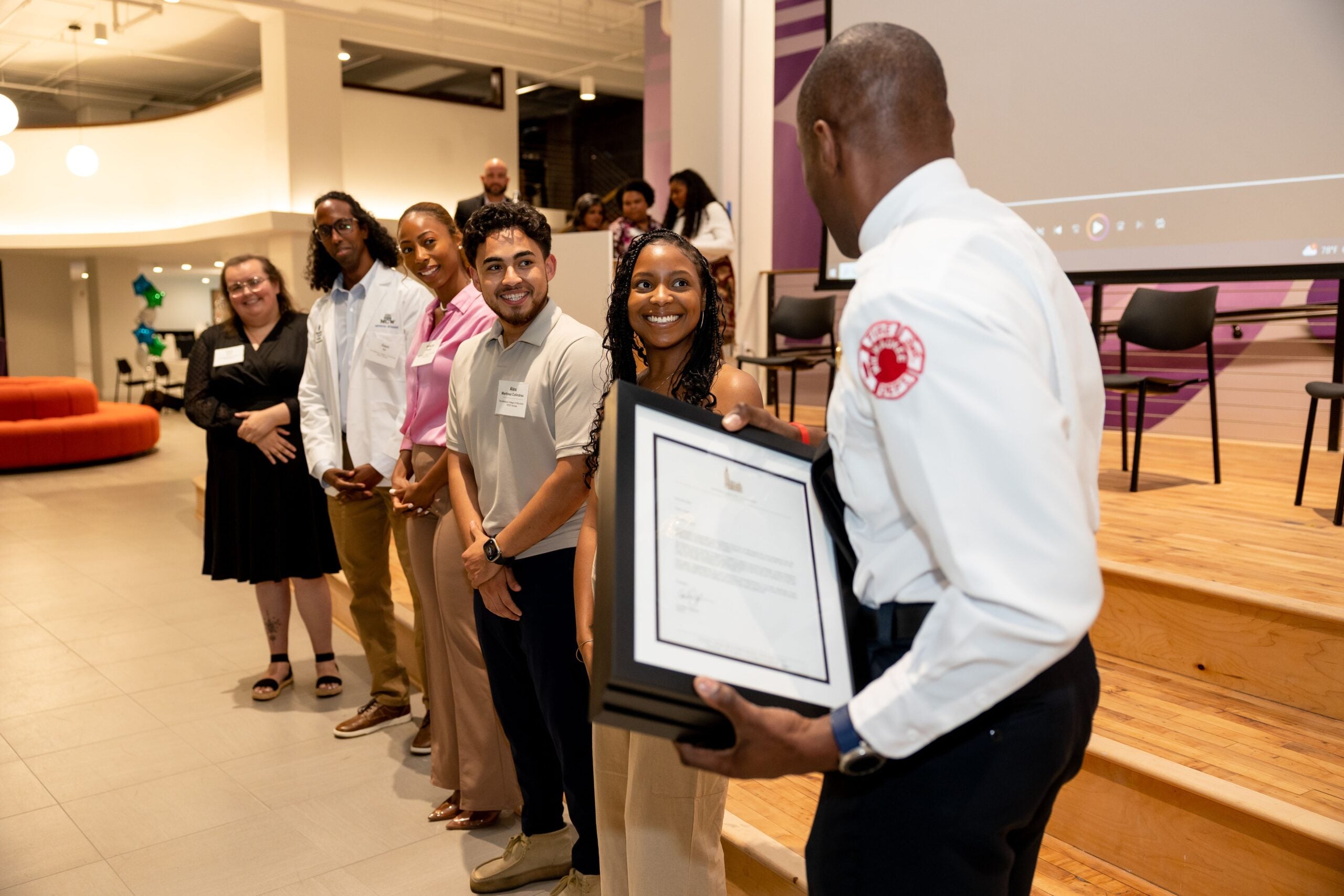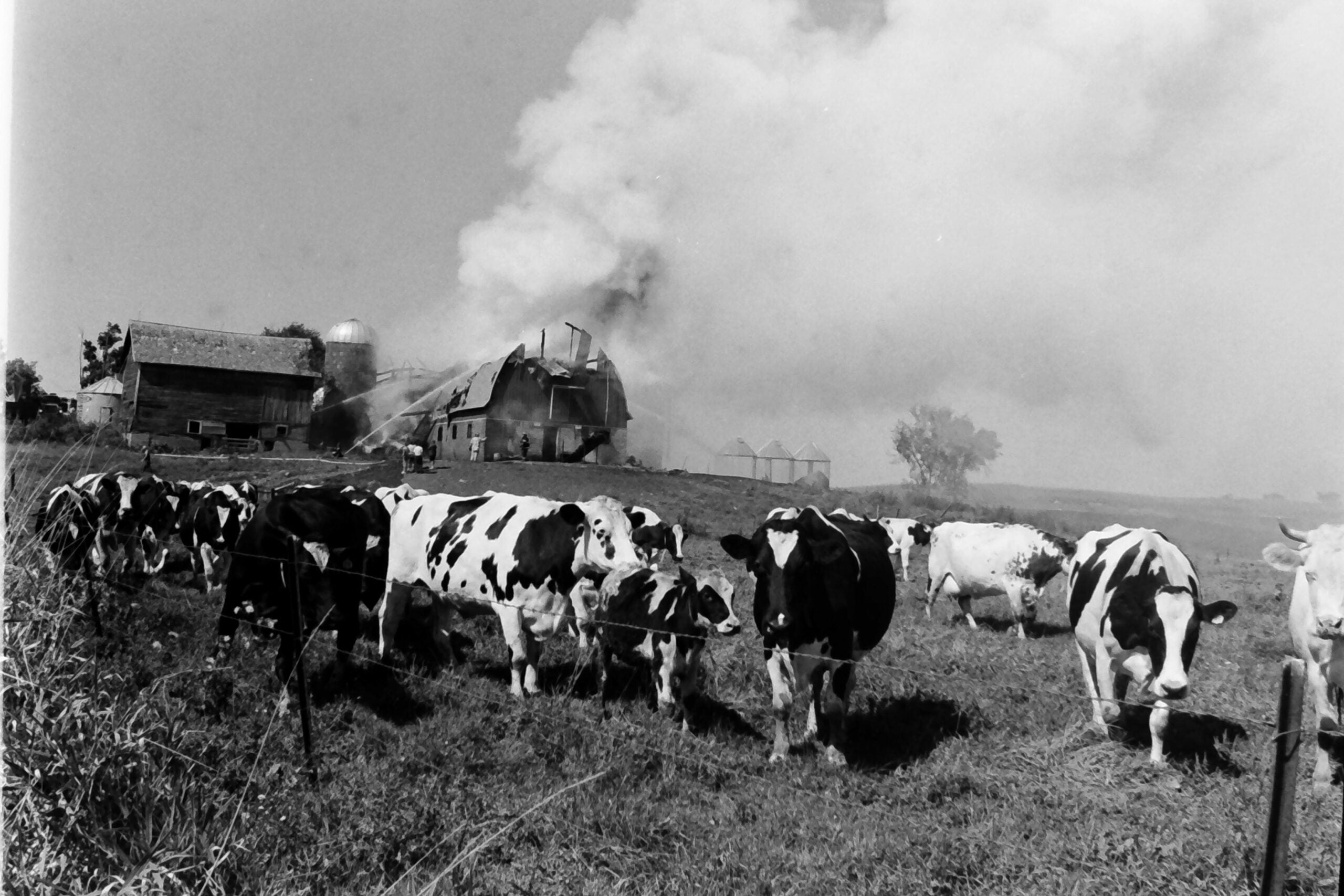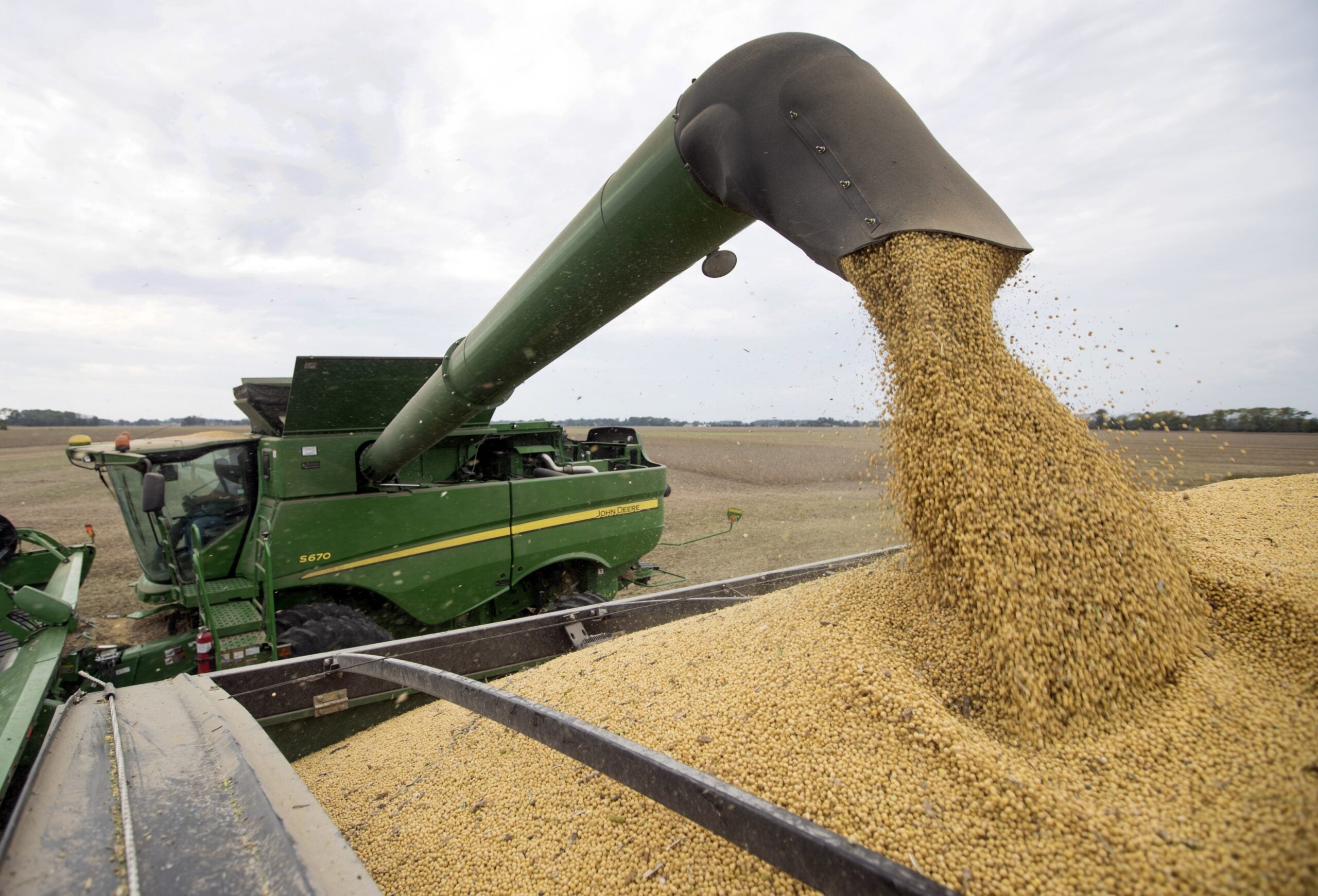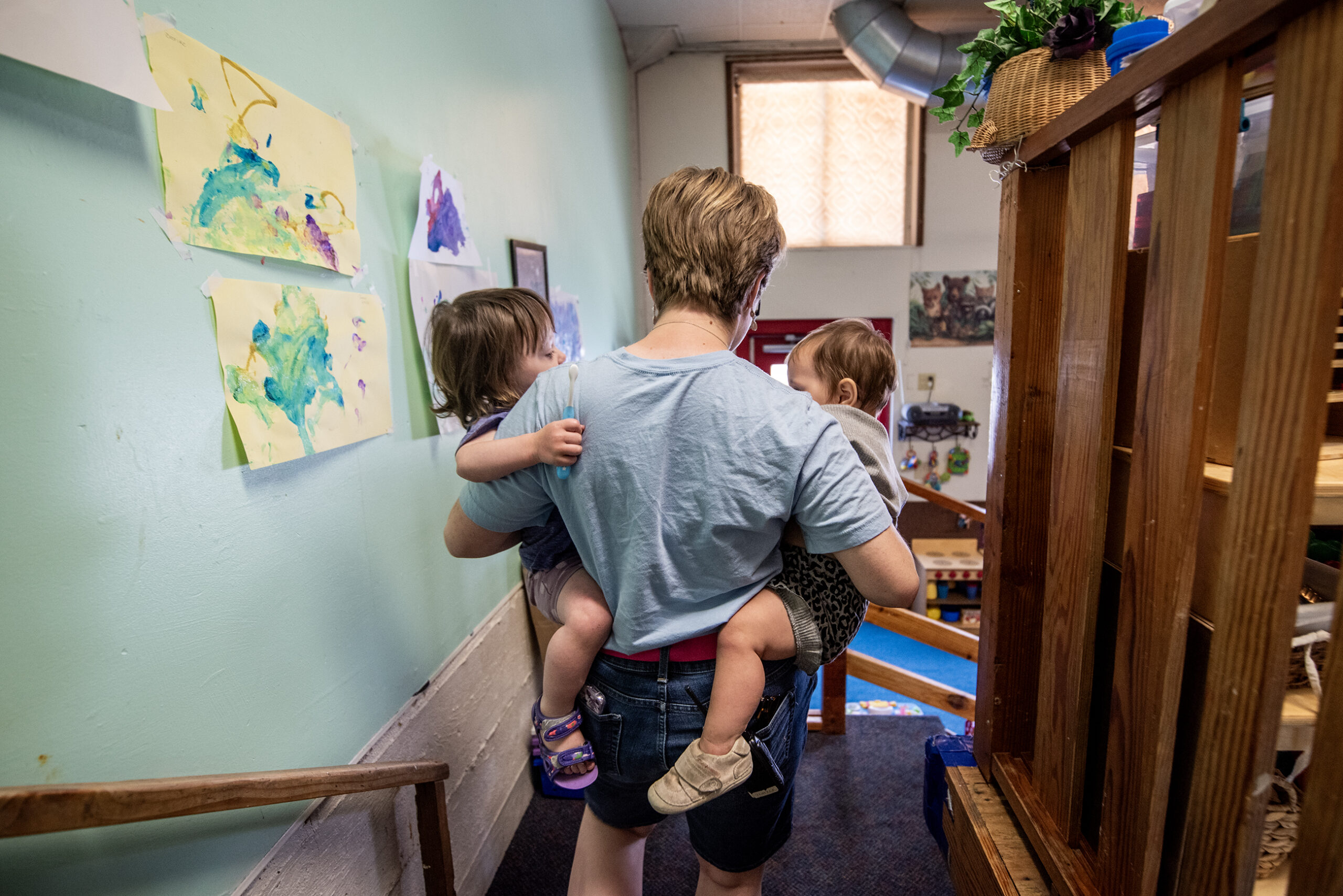For much of 17-year-old Jadyn Mathison’s life, her dad has been a firefighter.
“I hear about the stories that he goes through, and I think they’re so cool,” said Mathison, who is a senior at Onalaska High School. “This year, both him and my uncle got these awards for bringing people back to life and saving them, and I thought that was really cool. So I want to be like that.”
It’s why she joined a youth firefighter training program offered by the Onalaska Fire Department and Western Technical College. Created in 2021, the year-long academy provides high school seniors entry-level firefighting and emergency medical responder courses, preparing them to take the state certification exams before they graduate.
Stay informed on the latest news
Sign up for WPR’s email newsletter.
It’s one of a growing number of programs in Wisconsin that hope to address the shortage of volunteer firefighters across the state by recruiting the next generation.
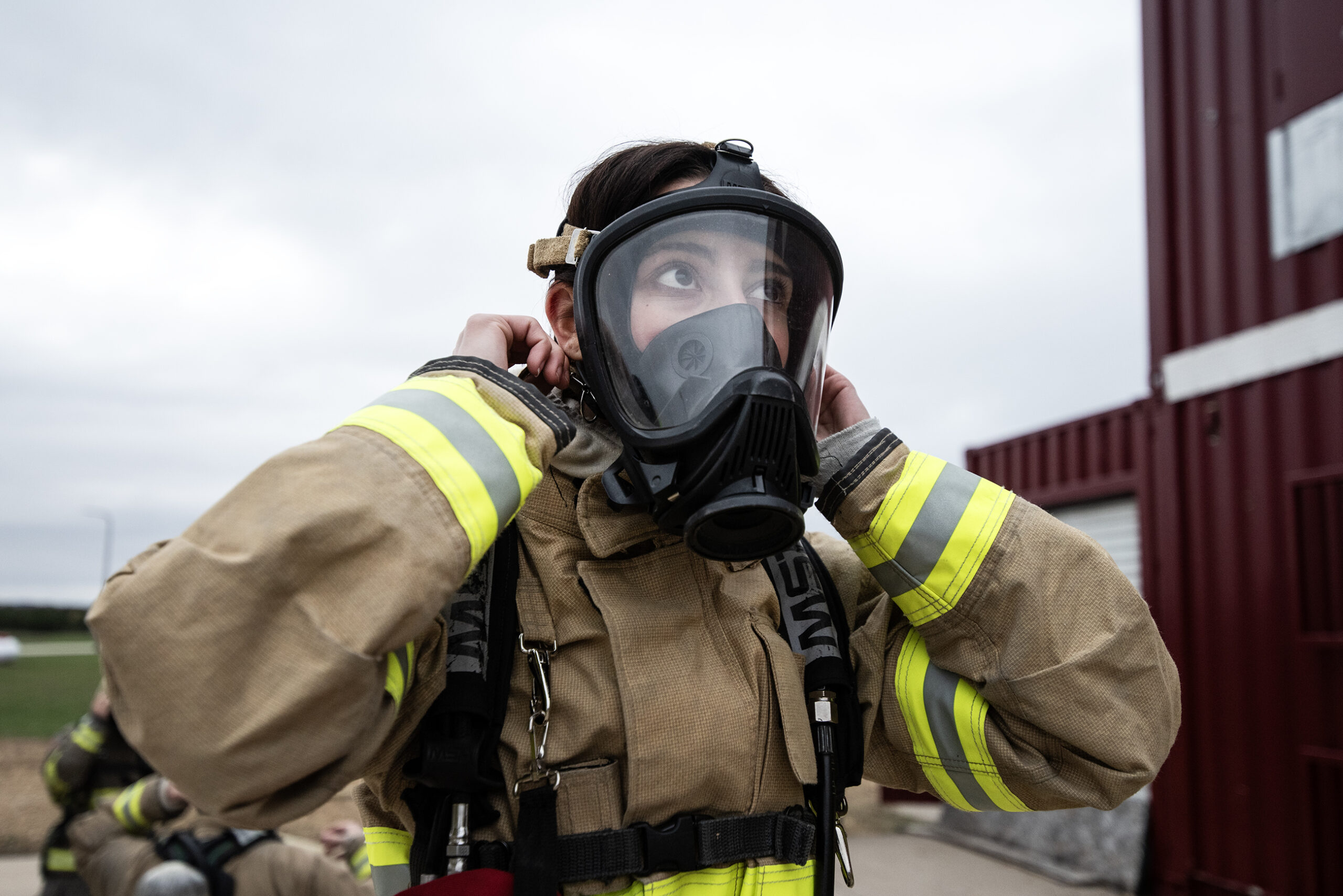
Mathison and her classmates spend the beginning of each school day at the Onalaska Fire station. She said a typical class starts with a lecture, before moving on to skills like handling ladders or running hose lines.
By the end of October, the students were ready to experience a fire for the first time. The group gathered at Western’s public safety training facility in Sparta, suiting up in full firefighting gear, with a mask attached to an air tank on their backs.
Instructors walked the group through the burn tower, a series of nine steel shipping containers stacked together to form a multi-story training course for the students to practice locating and extinguishing fires. They then crowded into a room to see how a fire would fill the space with smoke.
“It’s just really crazy because you can’t see anything,” Mathison said after the exercise. “I was right next to it and because of the smoke, I could not see the fire. Just thinking about it, it’s kind of scary, but it’s awesome.”
After graduation next spring, Mathison is planning to enroll in Western’s associate degree program for firefighting before pursuing the career full-time. She even spends her free time on TikTok watching firefighting videos.
“I tell my friends about the stuff that I do,” she said. “They would never want to do that in their whole life. They think I’m crazy, and I just think it’s so fun.”
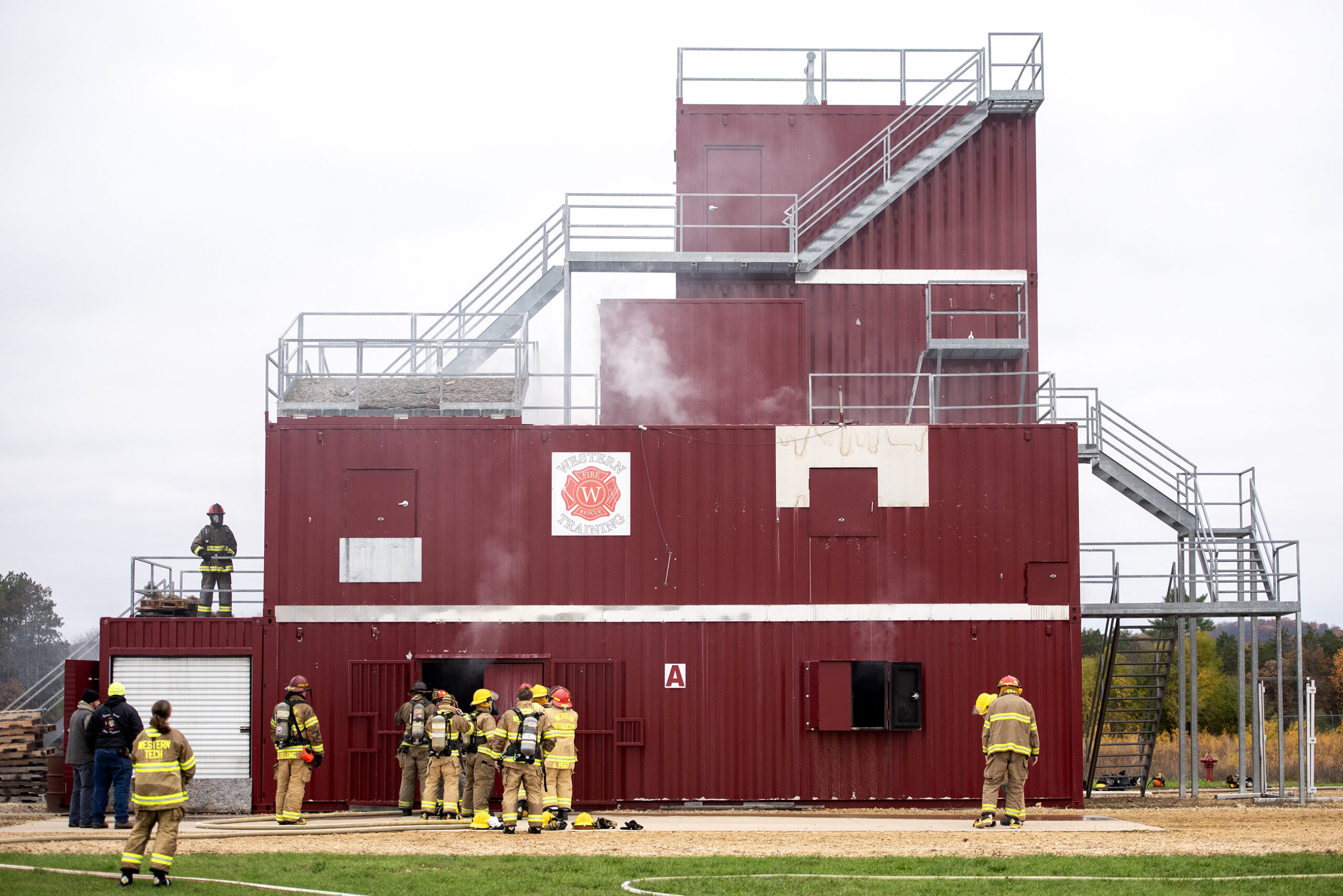
Youth training program a reality check for teens thinking about firefighting
Mathison’s enthusiasm for the profession is exactly what Western’s program is hoping to inspire before the students leave high school.
Tyler Ludeking, K-12 partnership specialist for Western Technical College, said putting them through the training early also gives the teens an opportunity to see if that interest holds up under the realities of the job.
“They’re able to confirm that they do have an interest in fire, or they’re able to confirm that maybe they don’t anymore, but they still want to go into other areas in public safety,” he said.
Ludeking said the live fire training is an important part of that, offering an opportunity for the students to put into practice what they’ve learned in class while still in a safe environment with their instructors.
“We wouldn’t do this if we didn’t feel like they were set up to be successful in this,” he said. “I think that it opens their eyes and gives them an opportunity to surprise all of us and showcase why it is that they want to do this.”
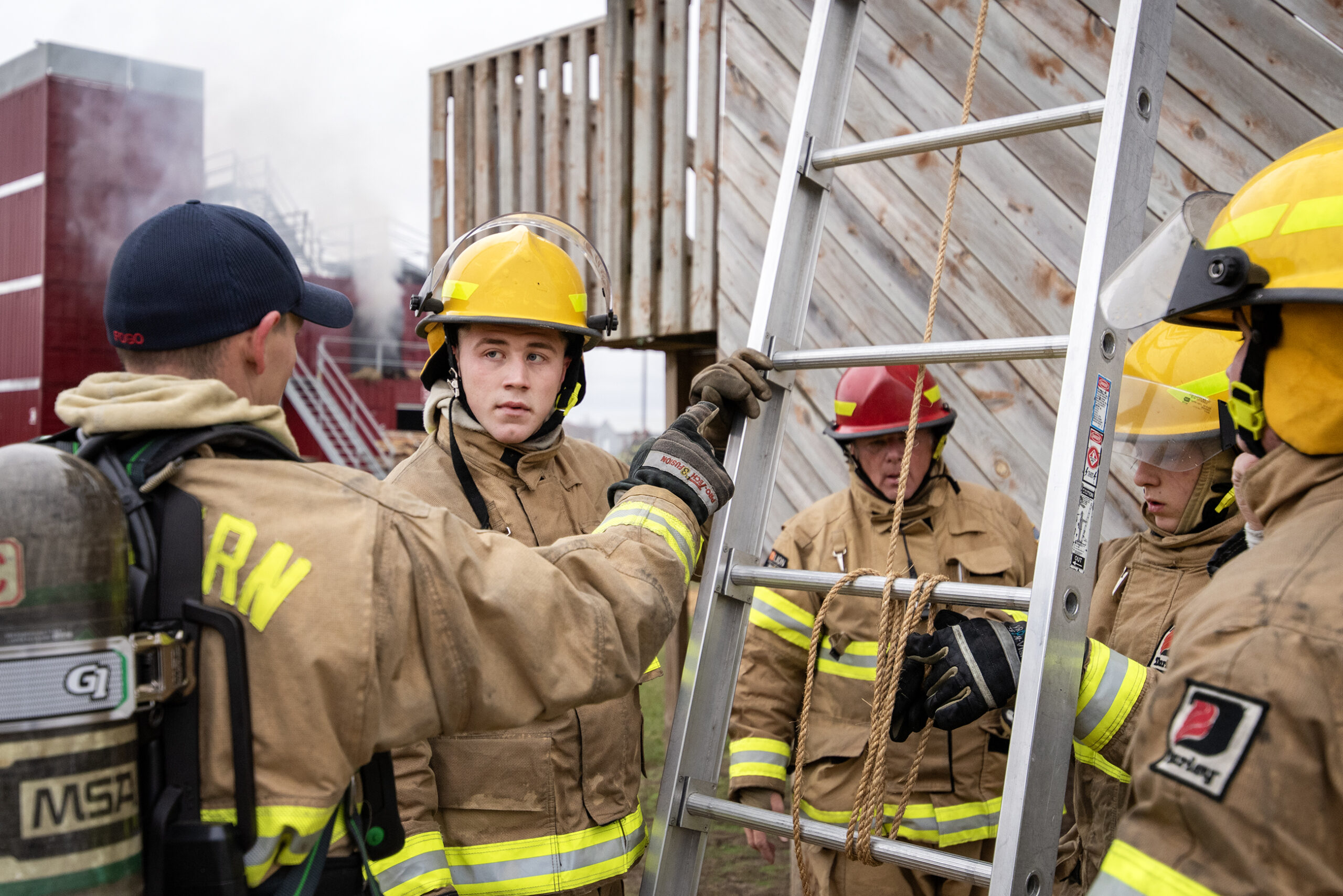
Now in their third year of the program, Ludeking said the academy has grown. They received a $22,593 grant from a new program through the state Department of Safety and Professional Services in 2022. The funding allowed them to purchase gear for the high school students to practice their skills.
Ludeking said interest in the program has also grown among potential students and fire departments in the area. He said some departments like Onalaska have already hired from the first classes of graduates, either as volunteers or recruits on the path to becoming paid staff.
The hope is that even if students decide to pursue another career path, they’ll still put into practice the free training as a volunteer, who typically earn a small stipend for every call.
“I think about students who are going to a two-year technical or four-year college, for them to be able to say, ‘Hey, at the same time, I’m going to be a volunteer firefighter in my off time,’” Ludeking said. “That’s a really good career opportunity for them in terms of employment in between whatever else it is that they’re doing.”
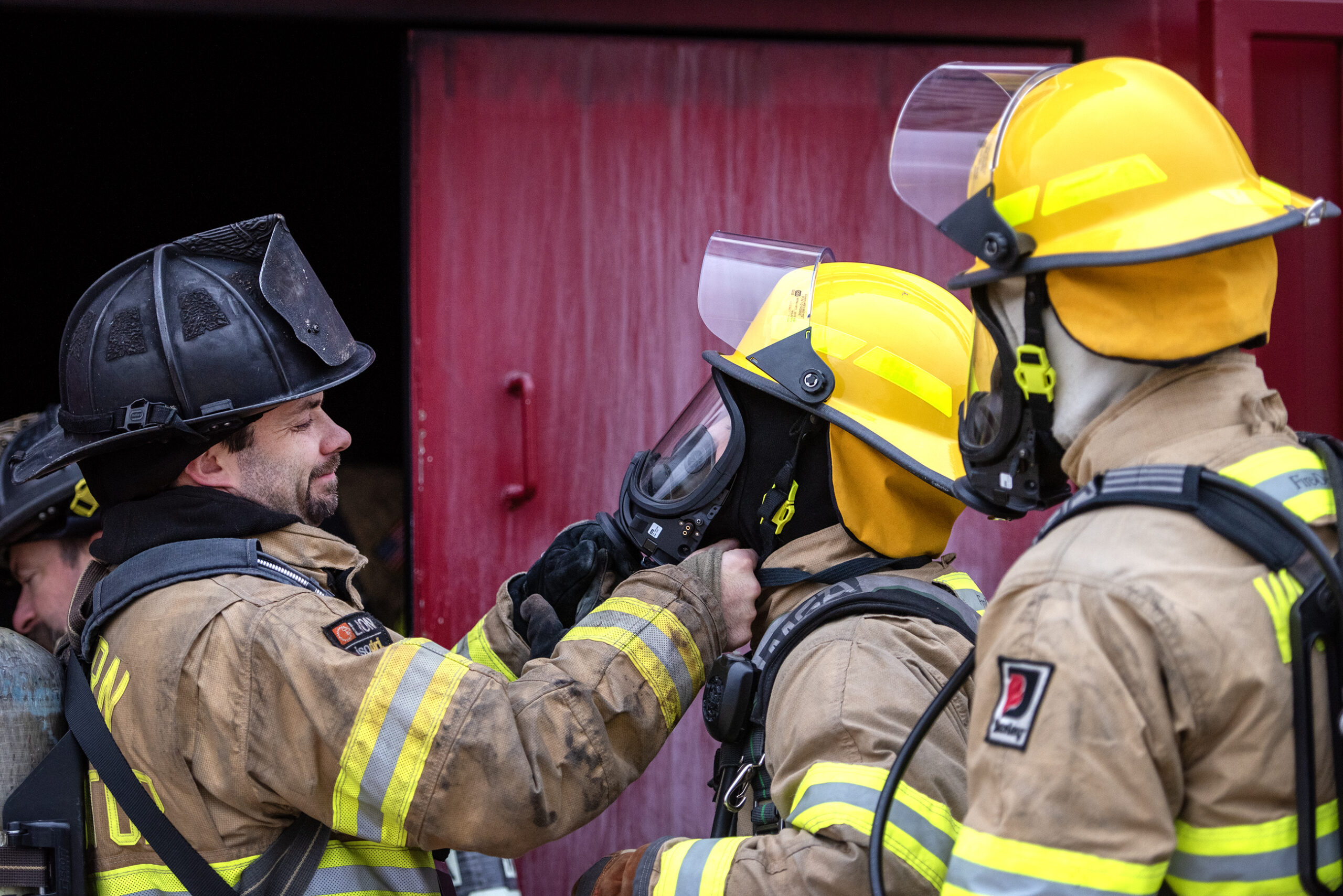
Interest in youth program gives volunteer fire leaders hope
More than 90 percent of Wisconsin’s fire departments are staffed mostly or entirely by volunteers, according to the U.S. Fire Administration. But over the last three decades, the number of volunteer firefighters across the country has been declining, especially in rural communities.
The National Fire Protection Association, which tracks the number of firefighters in the U.S., found there were 676,900 volunteer firefighters in 2020. That’s the lowest number reported since the NFPA started the report in the early 1980s. By comparison, there were 897,750 volunteer firefighters in 1984.
In Wisconsin, public safety leaders have been sounding the alarm about the decline in volunteers for years, especially as the population of rural communities declines.
Dennis Whitehead is an engineer for the Sparta Area Fire District, a paid on-call department that covers almost 300 square miles in southwestern Wisconsin. He joined the fire district more than 13 years ago, and he said interest in the work has changed.
“Back when I first got on the department, everybody showed up for everything,” he said. “You couldn’t get on a truck half the time because the old guys bumped you off. Once that older group retired, you don’t have that anymore.”
Whitehead said Sparta Area Fire still has a nearly full roster, and they’re working to recruit some of the teenage children of their current members. But departments across the state are becoming increasingly worried about recruitment, and many haven’t been as lucky. Even with the volunteers they do have, there’s no guarantee members will be available to respond.
“Our friends to the north, up in Black River, they’ve had calls for structure fires where it’s two or three people showing up, that’s it,” Whitehead said. “Life is just so busy.”
Whitehead was at the training in October to support some of the adults joining Sparta’s department. He said seeing the high school students doing the same work to get their state certification gives him hope about the future of volunteer departments.
Whitehead said even adults don’t know how they’ll react to fighting a real fire until they’re in the situation.
“You can tell who’s gonna stick with it and who isn’t during the training,” Whitehead said. “If they come out and they look kind of down, they’re having real serious thoughts about it. They come out smiling ear to ear, that’s more the guy that’s gonna stick around.”
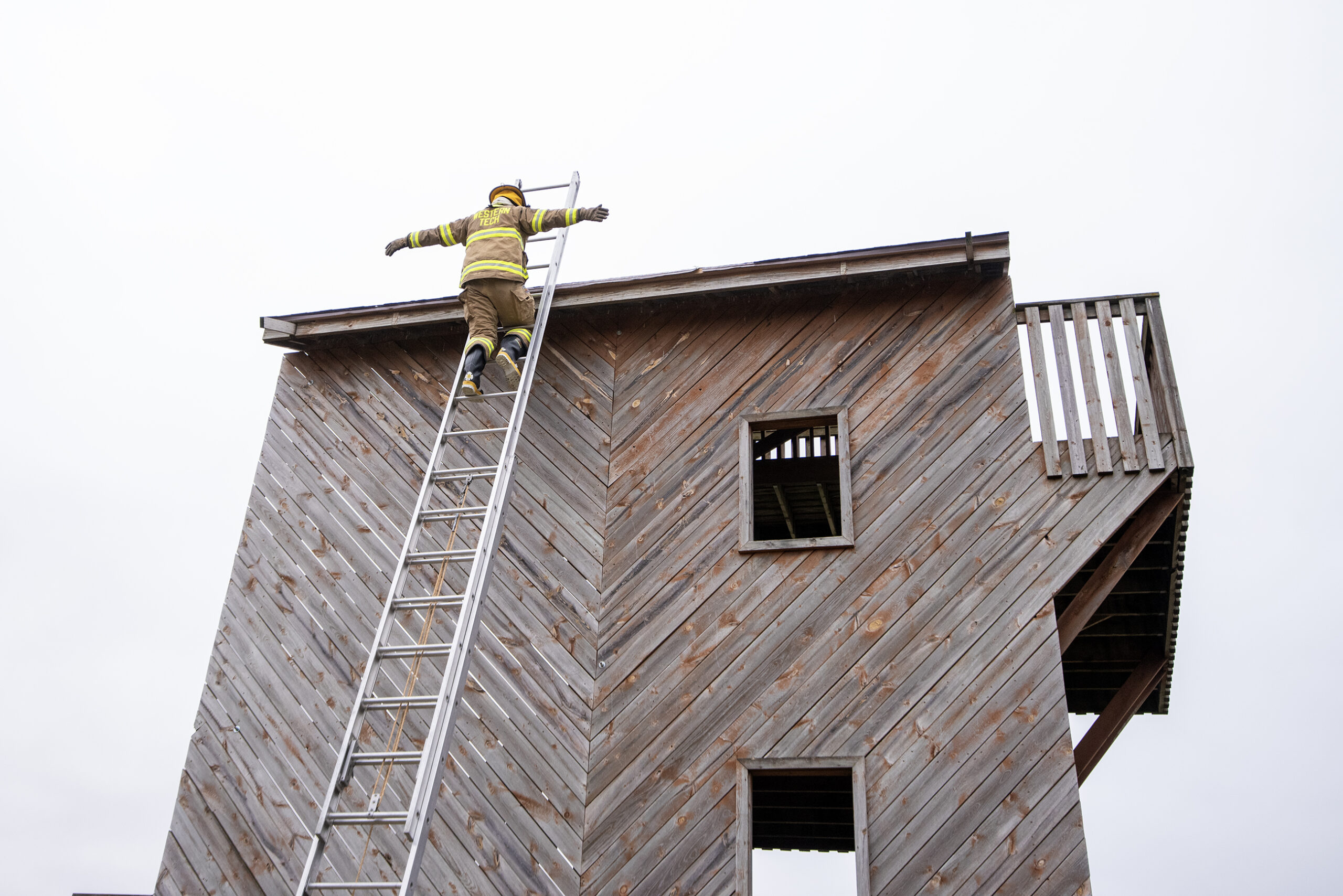
Some students want to pursue firefighting, but not in Wisconsin
While many of the students in the youth program want to stick with firefighting, some aren’t interested in staying in Wisconsin.
Rhett Stenslien is a senior at Westby Area High School and drives 45 minutes from his school each morning to attend the youth firefighting program in Onalaska. Like Mathison, Stenliesen is hoping to attend Western’s associate program and pursue a full-time career in firefighting. But he is also ready to leave his small hometown.
“I want to do wildland firefighting to begin with, and then eventually make my way to a department in some city,” he said. “I’m hoping not around here, but to get out of the Midwest a little bit.”
Stenslien said he hadn’t thought about a career in firefighting until a student in the program’s first class suggested he give it a try. He said the tight bond shared with his classmates has been the best part of the program, and he has found a sense of purpose in the work.
“I’m here to help others,” Stenslien said. “Spread positivity, help people on their worst days. That’s why I’m doing this.”
Mathison said she is also motivated to pursue a career that is centered around helping people. But she thinks the hardest part of the job will be seeing people during an emergency.
“You’re going to see all the traumatic situations, like car accidents, babies, animals and older people,” she said. “I feel like that’s going to be the most difficult (thing) to deal with.”
She said the class has already talked about how to go through a debriefing after a difficult call and the importance of suicide awareness in the profession.
But the reality of being a first responder hasn’t scared Mathison off the job. She plans to stay in Wisconsin after graduating from college, hoping to move north and join a department full-time.
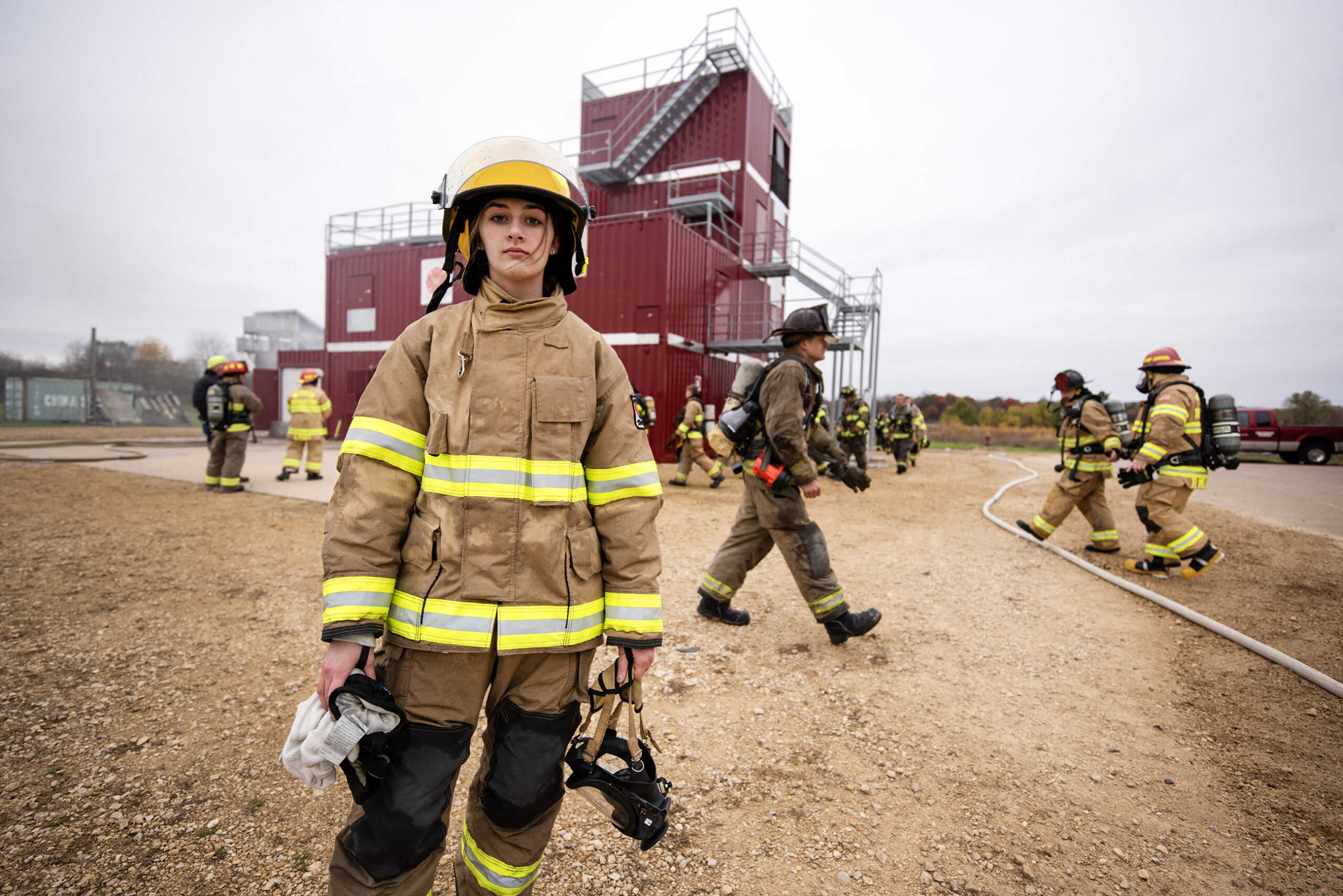
Wisconsin Public Radio, © Copyright 2025, Board of Regents of the University of Wisconsin System and Wisconsin Educational Communications Board.

